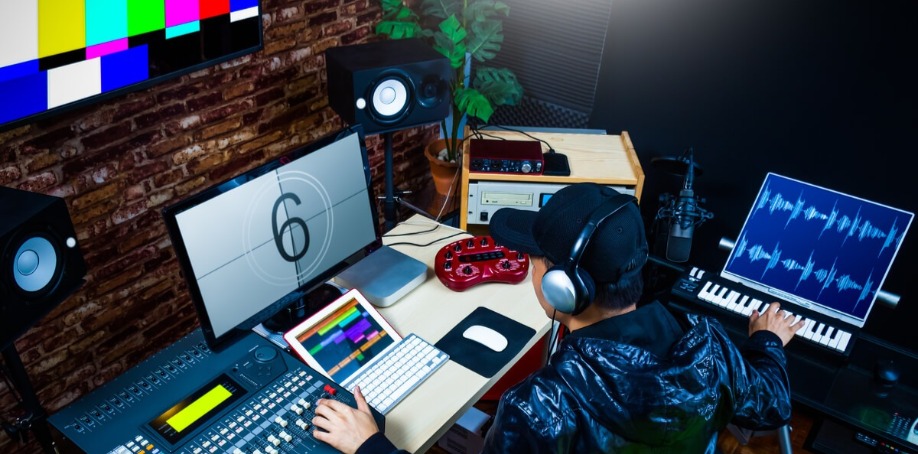
Head to a concert, music festival or symphony performance, and you expect crisp audio. Unfortunately, some attendees walk away from these events feeling dissatisfied. They enjoyed the visuals, but the sound left them feeling flat.
"It's frustrating that sound is so low in the list of priorities—perhaps fourth after video, lighting and scenery. It has been progressively relegated, and the irony is that you're paying to witness a musical artist, after all,” says Christian Heil, president of solutions manufacturer for the professional sound industry, L-Acoustic.
Enter AoIP.
This technology enables optimized, individualized sound. Installation is a snap. And sharing the results is easier than ever. Below we explore why AoIP seems custom-made for live musical events, and dig into how concerts might change in the future as technology plays a bigger role in live shows.
Easing Setup Concerns
Live shows travel. Musicians move from one venue to another, and most have sound technicians to help prepare for the night's show. These pros work on a short timeframe, and they often have limited space. AoIP can help.
In January 2016, a team set up and successfully completed one of the first full AoIP remote broadcasts. The entire concert setup was complete in one hour, and it connected to the control room via just one long cable. “Most noticeable was the huge time-saving on the setup of the production. You basically connect your optical fibre and you're good to go: video, audio, intercom, controls and internet are instantly available,” explained Karel De Bondt, media workflow innovator at VRT in Brussels
A live performance is different than a live broadcast, but even so, this success suggests that AoIP systems come together quickly. Presumably, they could be disassembled with the same speed, so the musicians could get back to the road. Plus, these same systems can scale quickly, which is crucial when switching from an intimate performance of one to a large ensemble group.
"With AV-over-IP, integrators also benefit from flexibility and nearly limitless expandability in AV systems—something that wasn't even conceivable in the past and another major reason why AV-over-IP has been gaining traction," says Brandon White, director of new product development at Vanco International.
The tech also makes distribution easy, and that could be crucial for the next generation of concert goers. An appetite for on-demand concerts, which journalist Lindsey Adler calls the "couch tour," is booming. Consumers want to feel like they're part of the experience, but they may not want to leave the house. An AoIP system can both grab sound and push it back out again. That could help meet the demand without the need for added technology.

Addressing Longstanding Audio Issues
Sound troubles at concert venues aren't new, and experts understand why they happen.
Dave Swallow, a live audio engineer, explains that standing in the center of the room leads to bass blasting, while standing at the front can break the sound apart. Being in the back of the venue means hearing more noise from the room and less from the speakers.
Volume is a traditional correction tool. If the entire room is drowned in sound, the theory goes, everyone will hear something. Sophisticated systems do more.
Immersive concert experiences modify sound based on position, says Phil Ward at Installation International. Logarithms adjust the mix to amend for latency, distortion, and ambient noise. The result isn't loud, but it is customized. This control relies on a great deal of equipment. But that technology must be invisible to the audience.
"You need to make sure that every consonant, every catch of breath, almost every falling bead of sweat is heard clearly in the back corners. Also, you want to make sure that, when somebody closes their eyes, the image stays on the stage and doesn't move to some speaker hanging over their heads," says Chris Marsh, production manager and sound engineer for Ed Sheeran.
AoIP systems allow for sensitive sound control, but don't lean on big, heavy cabling systems. Concert goers may hear the difference, but won't necessarily see it.
When Good Concerts Go Bad
The average concert ticket price has risen steadily year over year. That increase could, in part, be attributed to changing musician compensation plans, says Bloomberg entertainment reporter Lucas Shaw. When musicians can't make money on record sales, concerts make up the difference.
When people pay more for those tickets, they expect something close to perfection. That doesn't always happen.
In 2019, Fleetwood Mac played at Wembley Stadium in London. The sound quality, it seems, didn't meet expectations. In fact, Alexis Petridis, The Guardian's head rock and pop critic said it was like “trying to listen to Fleetwood Mac with your head submerged in a tureen of soup." Negative reviews like this could hamper concert sales. And if they're always tied to the same venue, they could keep new acts from coming to that spot while on tour. That's true even if organizers explain the technical complexities of the room.
It's the same for consumers. "They don't care for any of the sensitivities about the nature of the room, the available rigging points or any of the technical challenges that production companies face. They just expect it to work flawlessly," says James King, co-owner of Martin Audio.
Investing in AoIP technologies could be key to delivering a quality sound experience, so reviews like this are less likely.

Project Examples
Is this the right technology for your next project? Understanding how other teams have implemented AoIP could help you decide.
Synching Sound
Teams added audio-video over IP to the Zurich Opera House in Switzerland, and in 2018, visitors were treated to an augmented opera experience. Live music, live action, and shifting images were all part of the spectacle, says Guy Campos, online editor of AV Magazine.
There's a lot for visitors to watch in a show like this, but the sound must be top-notch and perfectly synched for the best experience. AoIP technology makes that possible.
Ensuring Good Sound in Multiple Spaces
In San Francisco, teams had multiple audiences to serve. "Adjoining the main chapel concert room are several satellite areas including a mezzanine, restaurant, and patio, so the mission was twofold: to provide pristine and punchy sound reinforcement for the main room while playing the same or different music in other spaces at lower volumes," says AV Network.
AoIP systems allow for this careful control, so both sets of listeners can have the experiences they want.
Sharing the Excitement
In Cuba, sound engineers recorded a historic Wynton Marsalis concert in front of a live and enthusiastic audience. They had to control sound at the venue, but images and sound were prepped for a live television broadcast too. The challenges were daunting, but AoIP worked well.
"We are regularly moving signals over long distances—typically more than 100 meters—without any interference from electric traffic, radio signals and dmx wires that are in close proximity," says Mauricio Blanco, owner and president of OKeventos.
What Will Future Concerts Look Like?
It's useful to understand what AoIP projects look like now. But it's even more interesting to think about how they might shape concerts in the future.
Industry professionals are excited about the prospect of sound immersion and customization. "We put you in the center of the mix, and that's something you never get to do in any other live show—we put people inside the show, rather than just broadcasting the show to them," says Steve Martz, THX's director of global technologies.
He is part of a team of professionals creating an immersive concert experience for Aerosmith. The show requires a staggering number of speakers and a great deal of computer modeling. But the result is a show unlike any other. If that becomes the norm, it could draw even more people to buy tickets.
Some professionals are experimenting with VR. Audience members slip on goggles at points during the show to enter different worlds. Others are recording and creating alt universes to share with at-home fans.
"People are having their first VR experiences now and are surprised to find that the VR evokes the same emotions and thrills and energy that you'd feel when you're actually at a show—people stand up for the encore just like they would at the arena," says Kevin Chernett, executive vice president of global partnerships and content distribution at Live Nation.
AoIP has a lot to contribute here. Crisp audio is crucial to the immersion experience, and delays ruin the scene. Some companies take this idea yet further with virtual concerts populated by avatars.
"To attend a virtual concert means to travel somewhere, even if that place is virtual. In digital space, the vehicle you drive is called an avatar—a virtual representation of your body," writes Bijan Stephen at The Verge. AoIP, with its fast connection speeds and quality transmission, could be key to a successful virtual concert. But even in-person shows can benefit from a punch of technology. Some companies are delivering that experience via cell phones.
"I got to test it out when Incubus recently played in New York, and was greeted with a live-music experience like none I'd ever had," writes Mike Murphy, technology editor for Quartz. He slipped in earbuds, logged into an app, and tapped into the concert mixing board. He could up the baseline, reduce ambient noise, and more. All that work happened within the app.
Imagine a future in which consumers can dial in this same concert experience, without the isolation of headphones. AoIP could make it at least somewhat possible. And as the audience collaborated on the perfect mix, imagine the memories they'd have. There's really no limit to how this technology could change the concert space. We can't wait to see what comes next.
Images by: halfpoint/©123RF.com, Yanyong Kanokshoti/©123RF.com, razihusin/©123RF.com


